By Gijsbert-Paul Berk
For a few years now, R&D departments at paint manufacturers and universities all over the world have been working on the development of water and dirt repellent paints, not only for the automotive industry, but also for use on buildings and in industrial production sites.
Recently Nissan hit the headlines with the announcement that they are testing the first self-cleaning car. Nissan says it is the first automaker to apply a super-hydrophobic, oleophobic industrial treatment called Ultra-Ever Dry to a vehicle body.
Ultra-Ever Dry is developed and marketed by Florida-based Ultratech International. The Company claims that the product can be used for all kinds of applications, from clothing and footwear to building materials. In addition to repelling liquid itself, it can be used for related purposes such as anti-icing and anti-bacterial treatments.
Engineers at the Nissan Technical Center Europe demonstrated the effectiveness of the coating by covering half of a Nissan Note hatchback with Ultra-Ever Dry and driving the car on their test track through rain, spray, frost, sleet and standing water. Dirt and grime simply slid off the half was treated. The other half, that wasn’t treated, ended up wet and dirty.
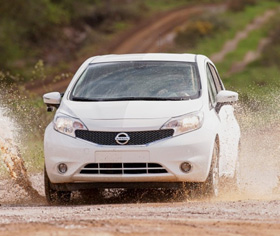
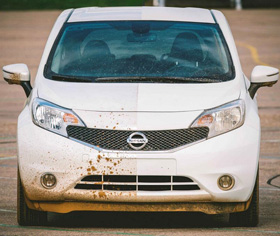
Nissan’s test results are promising…
Nissan announced that it has no plans to use the Ultra-Ever Dry self-cleaning coating as standard on its present or future model range. Depending on the tests they might consider offering the water and dirt-repellent treatment as an aftermarket option in the future.
Practical and environmental advantages
Even this sounds promising. Cars with self-cleaning bodies will not only do away with the chore of washing them regularity, they will also reduce the consumption (and spilling) of water on a grand scale. Considering the millions of cars that are periodically washed, this would mean an enormous environmental gain, perhaps with a much greater impact on the survival of our planet than all the present regulations to diminish the air pollution of cars.
A study by the Maryland Department of the Environment found that washing your car in your own driveway, takes between 50 and 75 US gallons (189 and 284 liters) of water. If this seems a lot, do your own calculation. The average garden hose has a flow rate of 7 gallons a minute. Spraying the body to take of the worst dirt takes 3 to 4 minutes, soaping and washing 4 minutes and spraying to clean the soap away, before drying the body, also 4 minutes. That is a total of at least 11 minutes of which during approximately 7 to 8 minutes, you use water. This means 8 x 7 = 56 gallons (212 liters) [and more if you are really serious about cleaning say, a Bugatti Royale for Pebble Beach!-Ed.]
It was found that commercial self-service bays, in which the water is recycled, consume an average only 15 gallons (57 liter) per car (the water is lost by evaporation). To bring these figures in perspective: According to the U.S. Environmental Protection Agency (EPA), a full bathtub requires about 70 gallons (265 liters) of water, while a five-minute shower uses 10 to 15 gallons (38 to 57 liters).
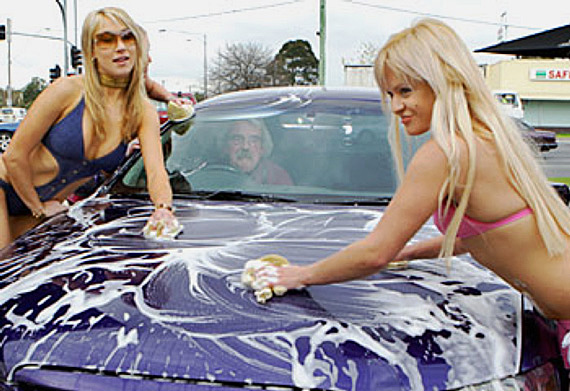
Sometimes washing cars is great fun. Ask these girls who also love to have a little extra pocket money.
A silent revolution?
The presentation by Nissan could be the start of a silent revolution in the automobile industry, because the idea of cars that never have to be washed certainly sounds very attractive. But is such a treatment really completely new? We have heard that car owners in the region of Brisbane in Australia had a Ceramic Polymer Nanotechnology Paint Protection product applied to the bodies of their automobiles (see Duco Scratch Pty Ltd). According to our information this product seems to provide an excellent protection against acid rain, tree sap and bugs, sea salt, UV rays, bird droppings etc. It gives an almost self-cleaning surface that only requires some water and a chamois from time to time to maintain the body in a spotlessness condition. I am certain there are also companies in the US and Europe which provide coatings that offer similar advantages. We like to hear about them. And in the mean time we wait to see what the other major car manufacturers are coming up with.
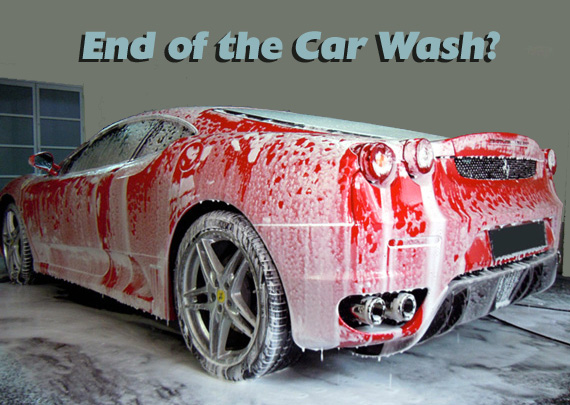
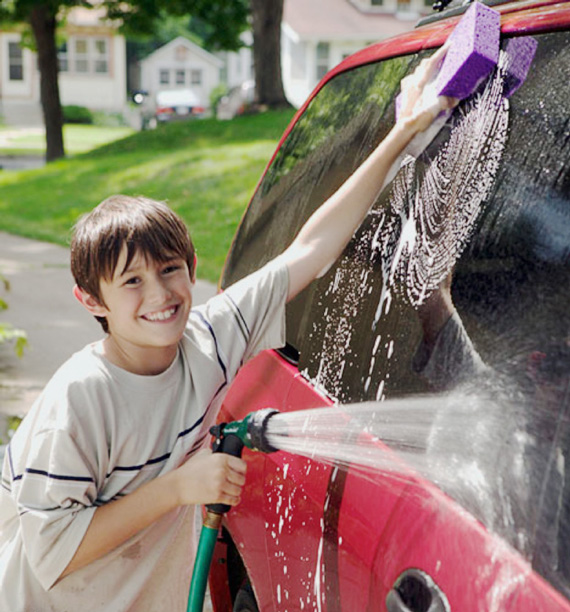
Fascinating concept.
Whatever happened to the radar-absorbing “stealth” paint that was under development a decade ago?
We have done some testing with this coating. It is great for water repellance, but not abrasive resistant. Likely to be an issue on the front surfaces where dust and rocks will contact.
That man in the purple car in the last photo is not going to be a customer for the new technology anytime soon – he is having too much fun!